Wiener process
description: stochastic process generalizing Brownian motion
17 results
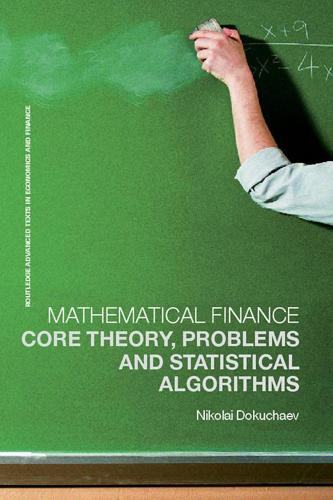
Mathematical Finance: Core Theory, Problems and Statistical Algorithms
by
Nikolai Dokuchaev
Published 24 Apr 2007
Definition 4.5 We say that a continuous time process w(t) = (w1(t),…, wn(t)): [0, +∞)×Ω→Rn is a (standard) n-dimensional Wiener process if (i) wi(t) is a (one-dimensional) Wiener process for any i=1,…, n; (ii) the processes {wi(t)} are mutually independent. Remark 4.6 Let be a matrix such that Then the process is also said to be a Wiener process (but not a standard Wiener process, since it has correlated components). We shall omit the word ‘standard’ below; all Wiener processes in this book are assumed to be standard. For simplicity, one can assume for the first reading that n=1, and all processes used in this chapter are one-dimensional. After that, one can read this chapter again taking into account the general case. Proposition 4.7 A Wiener process is a Markov process. be the filtration Proof.
…
© 2007 Nikolai Dokuchaev 4 Basics of Ito calculus and stochastic analysis This chapter introduces the stochastic integral, stochastic differential equations, and core results of Ito calculus. 4.1 Wiener process (Brownian motion) Let T>0 be given, Definition 4.1 We say that a continuous time random process w(t) is a (onedimensional) Wiener process (or Brownian motion) if (i) w(0)=0; (ii) w(t) is Gaussian with Ew(t)=0, Ew(t)2=t, i.e., w(t) is distributed as N(0, t); (iii) w(t+τ)−w(t) does not depend on {w(s), s≤t} for all t≥0, τ>0. Theorem 4.2 (N. Wiener). There exists a probability space such that there exists a pathwise continuous process with these properties. This is why we call it the Wiener process. The corresponding set Ω in Wiener’s proof of this theorem is the set C(0, T).
…
In fact, this process R0(t) can be expressed as Note that we need a small modification of the definition of w(t) and of the stochastic integral, to define interval [s0, +∞), where time interval [0, +∞) Normally, a Wiener process is defined on the time is initial time; we had introduced Wiener processes for only. We can use the following definition: where is some standard Wiener process independent from w(·). Proof of Theorem 9.2. To proof convergency, one should notice that R0 satisfies (9.9) © 2007 Nikolai Dokuchaev Estimation of Models for Stock Prices 171 and satisfies dY(t)=−λY(t)dt, Y(0)=R0(0), (9.10) i.e., Y(t)=R0(t)−R(t)=e−λtR0(0).

Mathematics of the Financial Markets: Financial Instruments and Derivatives Modelling, Valuation and Risk Issues
by
Alain Ruttiens
Published 24 Apr 2013
With respect to the expected value of the product of (t) at two different points of time t1 and t2, (8.5) Finally, the product of two different standard Wiener processes Z1 and Z2, is not random: (8.6) where ρ1, 2 is the correlation coefficient between the two processes. These relationships constitute the core of the stochastic calculus, together with the more general hypothesis that (8.7) as a reasonable assertion. A more general diffusion process is: 8.3 THE GENERAL WIENER PROCESS This process describes a random variable combining a deterministic process – the μdt term – with a standard Wiener process in d (8.8) In the general Wiener process, the μ and σ coefficients are posited constant and are called the drift and the volatility of the process.
…
Any other value for μ implies some degree of risk aversion, which can be defined as (8.15) This measure recalls – despite somewhat different notations – the price of risk measure within the framework of the CAPM (cf. Chapter 4, Section 4.3.4, Eq. 4.4). 8.9 NOTION OF MARTINGALE The geometric Wiener process applied on the returns of a stock price S (Eq. 8.1), has been built by using a physical probability measure, given the μ drift, associated with the stochastic standard Wiener process dZ. By assuming μ = r, this equation can be rewritten with the risk neutral probability measure, called Q. Defining dZQ as we obtain (8.16) that is, a geometric Wiener process involving a standard Wiener process under Q8. Integrating Eq. 8.16 in the same manner as in Section 8.7, instead of obtaining (Eq. 8.14) we obtain a similar relationship, but with r instead of μ: Therefore, by integration, the realization of S(t) on T will involve a (log-normal) risk neutral probability distribution, centered on the objective, “neutral” value of r, instead of on an arbitrary value μ.
…
collars collateralized debt obligations (CDOs) color sensitivity commodities commodity futures backwardation contango market price non-financial producers/users trading calculations conditional swaps Conditional VaR (C-VaR) confidence levels constant maturity swaps (CMSs) contango continuous interest compounding continuous interest rates continuous time continuous variables contracts contracts for difference (CFD) contribution, performance convenience yield conversion factors (CFs) convertible bonds (CBs) bond floor CB premium conversion ratio Hard Call protection outcome of operation pricing graph risk premium stock price parity convexity adjustments see also bond convexity copper prices copulas correlation basket options credit derivatives implied Portfolio Theory Spearman’s coefficient VaR calculations volatility counterparty risk futures see also credit risk counter-value currency (c/v) Courtadon model covered period, FRAs Cox, Ingersoll and Ross model Cox–Ross–Rubenstein (CRR) model credit default swaps (CDSs) on basket cash settlement with defined recovery rate market operations variants credit derivatives CDSs credit risk main features valuation application example basket derivatives binomial model CDO pricing correlation measures credit risk models useful measures Merton model “credit events” credit exposure credit risk behind the underlying components data use dangers default rates Merton model models in practice quantification recovery rates credit VaR crossing CRR see Cox–Ross–Rubenstein model CRSs see currency rate swaps crude oil market CTD see cheapest to deliver cubic splines method currencies futures options performance attribution spot instruments currency rate swaps (CRSs) c/v see counter-value currency C-VaR see Conditional VaR D see discount factors DCF see discounted cash flows method decision-making deep ITM (DITM) deep OTM (DOTM) default rates default risk see credit risk delta delta-gamma neutral management delta-normal method, VaR derivatives credit valuation problems volatility Derman see Black, Derman, Toy process deterministic phenomena diff swaps diffusion processes Dirac functions dirty prices discounted cash flows (DCF) method discount factors (D) duration D forward rates IRSs risk-free yield curve spot rates yield curve interpolations discrete interest compounding discrete time discrete variables DITM see deep ITM DOTM see deep OTM drift duration of bonds see bond duration duration D dVega/dTime dynamic replication see delta-Gamma neutral management dZ Black–Scholes formula fractional Brownian motion geometric Wiener process martingales properties of dZ(t) standard Wiener process economic capital ED see exposure at default effective duration, bonds efficient frontier efficient markets EGARCH see exponential GARCH process EONIA see Euro Over-Night Index Average swaps equities forwards futures Portfolio Theory stock indexes stocks valuation EUR see Euros EURIBOR rates CMSs EONIA/OIS swaps FRAs futures in-arrear swaps IRSs quanto/diff swaps short-term rates Euro Over-Night Index Average (EONIA) swaps European options basket options bond options caplets CRR pricing model exchange options exotic options floorlets Monte Carlo simulations option pricing rho Euros (EUR) CRSs forward foreign exchange futures spot market swap rate markets volatility Euro Stoxx EWMA see exponentially weighted moving average process Excel functions MA process Monte Carlo simulations excess return exchange options exotic options basket options Bermudan options binomial pricing model Black–Scholes formula currency options exchange options interest rates Monte Carlo simulations options on bonds options on non-financial underlyings PFCs pricing methods see also second generation options exotic swaps see also second generation swaps expected credit loss expected return exponential GARCH (EGARCH) process exponentially weighted moving average (EWMA) process exposure at default (ED) fair price/value “fat tails” problem financial models ARCH process ARIMA process ARMA process AR process GARCH process MA process MIDAS process finite difference pricing methods fixed leg of swap fixed rate, swaps floating rate notes/bonds (FRNs) floating rates floorlets floors forecasting ARIMA ARMA process AR process MA process foreign exchange (FX) see currencies; forex swaps; forward foreign exchange forex (FX) swaps forward foreign exchange 1 year calculations forex swaps forward forex swaps forward-forward transactions forward spreads NDF market operations forward rate agreements (FRAs) forwards Black–Scholes formula bonds CFDs CRSs equities foreign exchange FRAs futures vs forwards prices options PFCs rates swaps volatility forward zero-coupon rate 4-moments CAPM fractional Brownian motion FRAs see forward rate agreements FRNs see floating rate notes/bonds futures bonds commodities currencies equities forwards vs futures prices IRR margining system market price option pricing pricing settlement at maturity short-term interest rates stock indexes theoretical price future value (FV) bond duration short-term rates spot rates zero-coupon swaps FX see foreign exchange; forex swaps gain-loss ratio (Bernardo Ledoit) gamma gamma processes GARCH see generalized ARCH process Garman–Klass volatility Gaussian copulas Gaussian distribution Gaussian hypothesis generalized ARCH (GARCH) process EWMA process I/E/MGARCH processes non-linear models regime-switching models variants volatility general Wiener process application fractional Brownian motion gamma processes geometric Wiener process Itô Lemma Itô process jump processes volatility modeling see also standard Wiener process geometric average geometric Wiener process German Bund see Bund (German T-Bond) global VaR Gordon–Shapiro method government bonds Greece Greeks see sensitivities Hard Call protection Heath, Jarrow and Morton (HJM) model Heaviside function hedging bond futures delta-gamma neutral management futures 129–30 immunization vs hedging money market rate futures stock index futures heteroskedasticity hidden layers, NNs high frequency trading “high” prices historical method, VaR historical volatility HJM see Heath, Jarrow and Morton model Ho and Lee model Hull and White model Hurst coefficient IGARCH see integrated GARCH process immunization implied correlation implied repo rate (IRR) implied volatility definition historical volatility surface volatility curves volatility smiles in-arrear swaps indexes basket options capitalization-weighted price/value-weighted see also stock indexes inflation-linked bonds inflation swaps Information Ratio (IR) initial margin in the money (ITM) caps convertible bonds deep ITM options innovation term, AR instantaneous returns integrated GARCH (IGARCH) process interbank rates see EURIBOR rates; LIBOR rates interest rate options BDT process Black and Karasinski model caps collars floors forward rates HJM model LMM model single rate processes swaptions yield curve modeling interest rates day counting discount factors futures FV/PV interest compounding IRSs options short-term spot rates term structure see also yield interest rate swaps (IRSs) bond duration and CRSs fixed/floating rates pricing methods prior to swap pricing method revaluation vanilla swaps yield curve see also constant maturity swaps intermediate period, FRAs International Swaps and Derivatives Association (ISDA) intraday margining settlements intraday volatility investor decision-making IR see Information Ratio IRR see implied repo rate IRSs see interest rate swaps ISDA see International Swaps and Derivatives Association ITM see in the money Itô process Itô’s Lemma Japanese yen (JPY) Jarrow, Robert A.
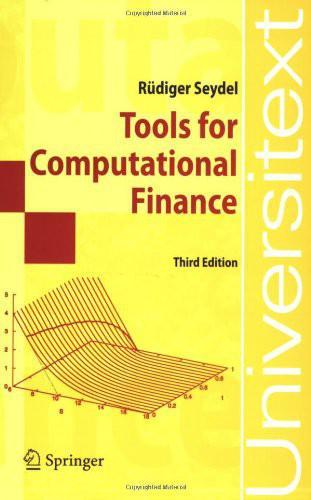
Tools for Computational Finance
by
Rüdiger Seydel
Published 2 Jan 2002
For a given realization of the Wiener process Wt we obtain as solution a trajectory (sample path) Xt . For another realization of the Wiener process the same theoretical solution (3.2) takes other values. If a Wiener process Wt is given, we call a solution Xt of the SDE a strong solution. In this sense the solution in (3.2) is a strong solution. If one is free to select a Wiener process, then a solution of the SDE is called weak solution. For a weak solution, only the distribution of X is of interest, not its path. Assuming an identical sample path of a Wiener process for the SDE and for the numerical approximation, a pathwise comparison of the trajectories 3.1 Approximation Error 93 Xt of (3.2) and y from (3.1) is possible for tj .
…
That is, the past history is fully reflected in the present value.4 An example of a process that is both Gaussian and Markov, is the Wiener process. 4 This assumption together with the assumption of an immediate reaction of the market to arriving informations are called hypothesis of the efficient market [Bo98]. 26 Chapter 1 Modeling Tools for Financial Options 11500 11000 10500 10000 9500 9000 8500 8000 7500 7000 0 50 100 150 200 250 300 350 400 450 500 Fig. 1.14. The Dow at 500 trading days from September 8, 1997 through August 31, 1999 1.6.1 Wiener Process Definition 1.7 (Wiener process, Brownian motion) A Wiener process (or Brownian motion; notation Wt or W ) is a timecontinuous process with the properties (a) W0 = 0 (with probability one) (b) Wt ∼ N (0, t) for all t ≥ 0.
…
(1.22) We summarize the numerical simulation of a Wiener process as follows: Algorithm 1.8 (simulation of a Wiener process) Start: t0 = 0, W0 = 0; ∆t loop j = 1, 2, ... : tj = tj−1 + ∆t draw Z ∼ N (0, 1) √ Wj = Wj−1 + Z ∆t The drawing of Z —that is, the calculation of Z ∼ N (0, 1)— will be explained in Chapter 2. The values Wj are realizations of Wt at the discrete points tj . The Figure 1.15 shows a realization of a Wiener process; 5000 calculated points (tj , Wj ) are joined by linear interpolation. Almost all realizations of Wiener processes are nowhere differentiable. This becomes intuitively clear when the difference quotient ∆Wt Wt+∆t − Wt = ∆t ∆t 28 Chapter 1 Modeling Tools for Financial Options 1.5 1 0.5 0 -0.5 -1 -1.5 0 0.1 0.2 0.3 0.4 0.5 0.6 0.7 0.8 0.9 1 Fig. 1.15.

Analysis of Financial Time Series
by
Ruey S. Tsay
Published 14 Oct 2001
However, we use the same notation xt , but call it a continuous-time stochastic process. 6.2.1 The Wiener Process In a discrete-time econometric model, we assume that the shocks form a white noise process, which is not predictable. What is the counterpart of shocks in a continuoustime model? The answer is the increments of a Wiener process, which is also known as a standard Brownian motion. There are many ways to define a Wiener process {wt }. We use a simple approach that focuses on the small change wt = wt+ t − wt associated with a small increment t in time. A continuous-time stochastic process {wt } is a Wiener process if it satisfies 1. 2. √ t, where is a standard normal random variable, and wt = wt is independent of w j for all j ≤ t.
…
i=1 Thus, the increment in wt from time 0 to time t is normally distributed with mean zero and variance t. To put it formally, for a Wiener process wt , we have that wt − w0 ∼ N (0, t). This says that the variance of a Wiener process increases linearly with the length of time interval. CONTINUOUS - TIME MODELS -0.4 w -1.5 -1.0 -0.5 0.0 w 0.0 0.2 0.4 0.6 0.5 224 0.0 0.2 0.4 0.6 0.8 1.0 0.0 0.2 0.4 0.6 0.8 1.0 0.6 0.8 1.0 time -0.6 -0.4 w -0.2 0.2 w 0.0 0.2 0.4 time 0.0 0.2 0.4 0.6 0.8 1.0 0.0 0.2 0.4 time time Figure 6.1. Four simulated Wiener processes. Figure 6.1 shows four simulated Wiener processes on the unit time interval [0, 1]. They are obtained by using a simple version of the Donsker’s Theorem in the statistical literature with n = 3000; see Donsker (1951) or Billingsley (1968).
…
Donsker’s Theorem n Assume that {z i }i=1 is a sequence of independent standard normal random variates. [nt] For any t ∈ [0, 1], let [nt] be the integer part of nt. Define wn,t = √1n i=1 z i . Then wn,t converges in distribution to a Wiener process wt on [0, 1] as n goes to infinity. The four plots start with w0 = 0, but drift apart as time increases, illustrating that the variance of a Wiener process increases with time. A simple time transformation from [0, 1) to [0, ∞) can be used to obtain simulated Wiener processes for t ∈ [0, ∞). Remark: A formal definition of a Brownian motion wt on a probability space (, F, P) is that it is a real-valued, continuous stochastic process for t ≥ 0 with independent and stationary increments.
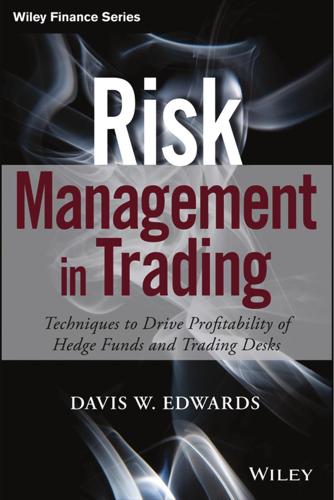
Risk Management in Trading
by
Davis Edwards
Published 10 Jul 2014
(See Figure 3.9, Dispersion in a Random Series.) There are two major factors that make Wiener processes important to financial mathematics. First, the dispersion of expected results accumulates in a manner that is easy to calculate mathematically. In this type of process, the variance accumulates linearly with time. As a result, volatility (the square root of variance) accumulates with the square root of time. The second factor is that, for many assets, this type of dispersion process is a reasonably good model for how prices actually change over time. (See Equation 3.7, Dispersion of a Wiener Process.) For a Weiner process that follows N(0, σ): Variance at time T = σ2T Standard Deviation at time T = σ T where N(0,σ) T Normal Distribution.
…
The time that has passed 74 RISK MANAGEMENT IN TRADING 0.1% 0.2% 50/50 chance of +1 or −1 Cumulative Result 10 9 8 7 6 5 4 3 2 1 0 −1 −2 −3 −4 −5 −6 −7 −8 −9 −10 1.0% 0.4% 1.8% 0.8% 1.6% 3.1% 25.0% 50.0% 100.0% 15.6% 25.0% 37.5% 37.5% 25.0% 16.4% 21.9% 23.4% 6.3% 24.6% 27.3% 15.6% 16.4% 20.5% 16.4% 11.7% 10.9% 9.4% 3.1% 24.6% 27.3% 31.3% 25.0% 12.5% 20.5% 24.6% 27.3% 31.3% 11.7% 16.4% 21.9% 23.4% 31.3% 37.5% 50.0% 50.0% 4.4% 7.0% 10.9% 9.4% 6.3% 12.5% 3.1% 5.5% 7.0% 5.5% 3.1% 1.6% 0.8% 4.4% 1.8% 1.0% 0.4% 0.2% 0.1% 0 1 2 3 4 5 6 7 8 9 10 Time FIGURE 3.9 Dispersion in a Random Series For financial mathematics, the Wiener process is often generalized to include a constant drift term that pushes prices upward. The constant drift term is due to risk‐free inflation (and described later in the chapter in the “time value of money” discussion). Continuous time versions of this process are called Generalized Wiener Process or the Ito Process. (See Equation 3.8, A Stochastic Process.) A stochastic process with discrete time steps can be described as: ΔSt = μΔt + σΔWt St or ΔSt = μSt Δt + σSt ΔWt where ΔSt Change in Price.
…
Commonly, this is a constant, but can be generalized to vary over time Δt Change in Time. Typically, finance uses convention that Δt = 1.0 is a one year passage of time. As a result, drift and volatility are represented as annualized numbers σ Volatility. The annualized volatility that is used to scale the change in the Wiener Process (ΔWt) to the asset being modeled ΔWt 75 Change in the Wiener process. A draw from a normal distribution scaled to the appropriate time step ΔWt = N(0, 1) Δt N(0, 1) Normal Distribution. A draw from a normal distribution with mean = 0 and standard deviation = 1 These processes are historically significant because option pricing formulas are based on stochastic mathematics.
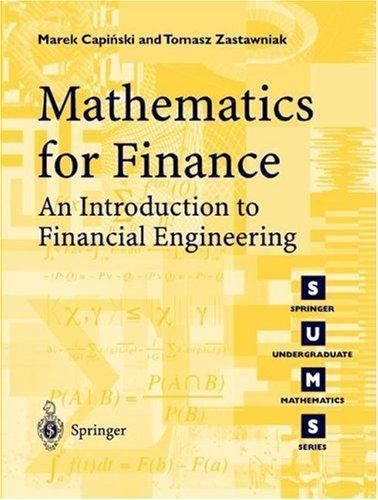
Mathematics for Finance: An Introduction to Financial Engineering
by
Marek Capinski
and
Tomasz Zastawniak
Published 6 Jul 2003
As a result, the American call is equivalent to its European counterpart. 8.12 The ex-dividend stock prices are n 0 1 11.20 2 12.32 < / S(n) ex-div 12.00 10.64 \ 10.34 9.40 < 8.93 294 Mathematics for Finance The corresponding European and American put prices will be n 0 1 2.53 2.80 P E (n) P A (n) 2 1.68 1.68 < / 3.36 3.36 \ 3.66 3.66 3.42 3.69 4.33 4.60 < 5.07 5.07 At time 1 the payoff of the American put option in both the up and down states will be higher than the value of holding the option to expiry, so the option should be exercised in these states (indicated by bold figures). 1 2 8.13 Take b such that S(0)eσb+ru− 2 σ u = a and put V (t) = W (t)+ m − r + 12 σ 2 σt for any t ≥ 0, which is a Wiener process under P∗ . In particular, V (u) is normally distributed under P∗ with mean 0 and variance u. The right-hand side of (8.8) is therefore equal to 1 2 E∗ e−ru S(u)1S(u)<a = S(0)E∗ eσV (u)− 2 σ u 1V (u)<b $ b 1 2 x2 1 = S(0) eσx− 2 σ u √ e− 2u dx 2πt −∞ $ b (x−σu)2 1 √ = S(0) e− 2u dx. 2πt −∞ Now observe that, since V (t) is a Wiener process under P∗ , the random variables V (u) and V (t) − V (u) are independent and normally distributed with mean 0 and variance u and t − u, respectively.
…
The last equality means that W (t) is normally distributed with mean 0 and variance t. This argument, based on the Central Limit Theorem, works for any single fixed time t > 0. It is possible to extend the result to obtain a limit for all times t ≥ 0 simultaneously, but this is beyond the scope of this book. The limit W (t) is called the Wiener process (or Brownian motion). It inherits many of the properties of the random walk, for example: 1. W (0) = 0, which corresponds to wN (0) = 0. 2. E(W (t)) = 0, corresponding to E(wN (t)) = 0 (see the solution of Exercise 3.25). 3. Var(W (t)) = t, with the discrete counterpart Var(wN (t)) = t (see the solution of Exercise 3.25). 4.
…
As a starting point we take the continuous time model of stock prices developed in Chapter 3 as a limit of suitably scaled binomial models with time steps going to zero. In the resulting continuous time model the stock price is given by (8.5) S(t) = S(0)emt+σW (t) , where W (t) is the standard Wiener process (Brownian motion), see Section 3.3.2. This means, in particular, that S(t) has the log normal distribution. Consider a European option on the stock expiring at time T with payoff f (S(T )). As in the discrete-time case, see Theorem 8.4, the time 0 price D(0) of the option ought to be equal to the expectation of the discounted payoff e−rT f (S(T )), (8.6) D(0) = E∗ e−rT f (S(T )) , under a risk-neutral probability P∗ that turns the discounted stock price process e−rt S(t) into a martingale.
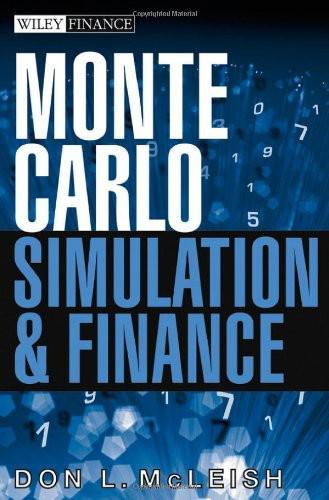
Monte Carlo Simulation and Finance
by
Don L. McLeish
Published 1 Apr 2005
This process Zs is, both in discrete and continuous time, a martingale. MODELS IN CONTINUOUS TIME 67 Wiener Process 3 2.5 2 W(t) 1.5 1 0.5 0 -0.5 -1 0 1 2 3 4 5 t 6 7 8 9 Figure 2.6: A sample path of the Wiener process Models in Continuous Time We begin with some oversimplified rules of stochastic calculus which can be omitted by those with a background in Brownian motion and diffusion. First, we define a stochastic process Wt called the standard Brownian motion or Wiener process having the following properties; 1. For each h > 0, the increment W (t+h)−W (t) has a N (0, h) distribution and is independent of all preceding increments W (u) − W (v), t > u > v > 0. 2.
…
Which would you prefer, a gift of $100 or a 50-50 chance of making $200? A fine of $100 or a 50-50 chance of losing $200? Are your preferences self-consistent and consistent with the principle that individuals are riskaverse? PROBLEMS 93 6. Compute the stochastic differential dXt (assuming Wt is a Wiener process) when (a) Xt = exp(rt) Rt (b) Xt = 0 h(t)dWt (c) Xt = X0 exp{at + bWt } (d) Xt = exp(Yt ) where dYt = µdt + σdWt . 7. Show that if Xt is a geometric Brownian motion, so is Xtβ for any real number β. 8. Suppose a stock price follows a geometric Brownian motion process dSt = µSt dt + σSt dWt Find the diffusion equation satisfied by the processes (a) f (St ) = Stn ,(b) log(St ), (c) 1/St .
…
Show by considering the distribution 94 CHAPTER 2. SOME BASIC THEORY OF FINANCE of the sum and taking limits that the random variable normal distribution and find its mean and variance. RT 0 g(t)dWt has a 12. Consider two geometric Brownian motion processes Xt and Yt both driven by the same Wiener process dXt = aXt dt + bXt dWt dYt = µYt dt + σYt dWt . Derive a stochastic differential equation for the ratio Zt = Xt /Yt . Suppose for example that Xt models the price of a commodity in $C and Yt is the exchange rate ($C/$U S) at time t. Then what is the process Zt ? Repeat in the more realistic situation in which (1) dXt = aXt dt + bXt dWt (2) dYt = µYt dt + σYt dWt (1) (2) and Wt , Wt are correlated Brownian motion processes with correlation ρ. 13.
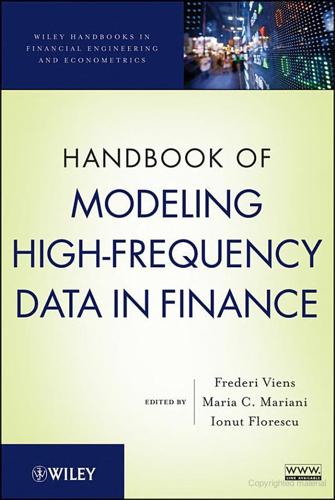
Handbook of Modeling High-Frequency Data in Finance
by
Frederi G. Viens
,
Maria C. Mariani
and
Ionut Florescu
Published 20 Dec 2011
Assumption (2) simply means that the increments of X over disjoint periods of time are independent. Finally, the last condition is tantamount to asking that X has continuous paths. Note that we can represent a general geometric Brownian motion in the form St = S0 eσ Wt +μt , where (Wt )t≥0 is the Wiener process. In the context of the above Black–Scholes model, a Wiener process can be defined as the log return process of a price process satisfying the Black–Scholes conditions (1)–(3) with μ = 0 and σ 2 = 1. As it turns out, assumptions (1)–(3) above are all controversial and believed not to hold true especially at the intraday level (see Cont (2001) for a concise description of the most important features of financial data).
…
In the following section, we concentrate on two important and popular types of exponential Lévy models. 1.2.2 VARIANCE-GAMMA AND NORMAL INVERSE GAUSSIAN MODELS The VG and NIG Lévy models were proposed in Carr et al. (1998) and BarndorffNielsen (1998), respectively, to describe the log return process Xt := log St /S0 of a financial asset. Both models can be seen as a Wiener process with drift that is time-deformed by an independent random clock. That is, (Xt ) has the representation Xt = σ W (τ (t)) + θτ (t) + bt, (1.1) where σ > 0, θ, b ∈ R are given constants, W is Wiener process, and τ is a suitable independent subordinator (nondecreasing Lévy process) such that Eτ (t) = t, and Var(τ (t)) = κt. In the VG model, τ (t) is Gamma distributed with scale parameter β := κ and shape parameter α := t/κ, while in the NIG model τ (t) follows an inverse Gaussian distribution with mean μ = 1 and shape parameter λ = 1/(tκ).
…
LANCETTE Department of Statistics, Purdue University, West Lafayette, IN KISEOP LEE Department of Mathematics, University of Louisville, Louisville, KY; Graduate Department of Financial Engineering, Ajou University, Suwon, South Korea YA N H U I M I Department of Statistics, Purdue University, West Lafayette, IN 1.1 Introduction Driven by the necessity to incorporate the observed stylized features of asset prices, continuous-time stochastic modeling has taken a predominant role in the financial literature over the past two decades. Most of the proposed models are particular cases of a stochastic volatility component driven by a Wiener process superposed with a pure-jump component accounting for the Handbook of Modeling High-Frequency Data in Finance, First Edition. Edited by Frederi G. Viens, Maria C. Mariani, and Ionuţ Florescu. © 2012 John Wiley & Sons, Inc. Published 2012 by John Wiley & Sons, Inc. 3 4 CHAPTER 1 Estimation of NIG and VG Models discrete arrival of major influential information.

Frequently Asked Questions in Quantitative Finance
by
Paul Wilmott
Published 3 Jan 2007
Richardson later worked on the mathematics for the causes of war. 1923 Wiener Norbert Wiener developed a rigorous theory for Brownian motion, the mathematics of which was to become a necessary modelling device for quantitative finance decades later. The starting point for almost all financial models, the first equation written down in most technical papers, includes the Wiener process as the representation for randomness in asset prices. See Wiener (1923). 1950s Samuelson The 1970 Nobel Laureate in Economics, Paul Samuelson, was responsible for setting the tone for subsequent generations of economists. Samuelson ‘mathematized’ both macro and micro economics. He rediscovered Bachelier’s thesis and laid the foundations for later option pricing theories.
…
Kiyosi Itô showed the relationship between a stochastic differential equation for some independent variable and the stochastic differential equation for a function of that variable. One of the starting points for classical derivatives theory is the lognormal stochastic differential equation for the evolution of an asset. Itô’s lemma tells us the stochastic differential equation for the value of an option on that asset. In mathematical terms, if we have a Wiener process X with increments dX that are normally distributed with mean zero and variance dt then the increment of a function F(X) is given by This is a very loose definition of Itô’s lemma but will suffice. See Itô (1951). 1952 Markowitz Harry Markowitz was the first to propose a modern quantitative methodology for portfolio selection.
…
Example The obvious example concerns the random walkdS = µS dt + σ S dX commonly used to model an equity price or exchange rate, S. What is the stochastic differential equation for the logarithm of S, lnS? The answer is Long Answer Let’s begin by stating the theorem. Given a random variable y satisfying the stochastic differential equationdy = a(y, t) dt + b(y, t) dX , where dX is a Wiener process, and a function f(y, t) that is differentiable with respect to t and twice differentiable with respect to y, then f satisfies the following stochastic differential equation Itô’s lemma is to stochastic variables what Taylor series is to deterministic. You can think of it as a way of expanding functions in a series in dt, just like Taylor series.
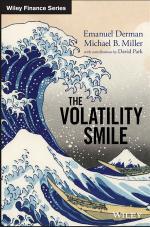
The Volatility Smile
by
Emanuel Derman,Michael B.Miller
Published 6 Sep 2016
Consider at time t a stock with price S, a known constant volatility 𝜎 S , and an expected return, 𝜇S , together with a riskless bond with price B 85 86 THE VOLATILITY SMILE that yields r, assumed constant through time. The stochastic evolution of the stock and bond prices are given by dS = 𝜇S Sdt + 𝜎S SdZ (5.1) dB = Brdt where dZ is a standard Wiener process. The price C of a call option on the stock at time t is a function of the stock price and time. Using Itô’s lemma, the evolution of C is given by 𝜕C dt + 𝜕t { 𝜕C = + 𝜕t dC = 𝜕C 1 𝜕2C (𝜎 S)2 dt dS + 2 𝜕S2 S 𝜕S } 1 𝜕2C 𝜕C 𝜕C 2 (𝜎S S) 𝜇S S + 𝜎 SdZ dt + 2 2 𝜕S 𝜕S 𝜕S S (5.2) = 𝜇C Cdt + 𝜎C CdZ where, by definition { 1 𝜕2C 𝜕C 𝜕C (𝜎 S)2 + 𝜇S S + 𝜕t 2 𝜕S2 S 𝜕S S 𝜕C 𝜕lnC 𝜎S 𝜎 = 𝜎C = C 𝜕S S 𝜕lnS 𝜇C = 1 C } (5.3) The risk of both the stock and the call in Equations 5.1 and 5.2 depend only on the stochastic term dZ.
…
Then T C0 = CT e−rT − ∫0 Δ(Sx , x)𝜎Sx e−rx dZx (5.20) As mentioned earlier, the initial value of the call is path dependent, unless the hedge ratio Δ = ΔBS . However, suppose we take the expected value of the call over all stochastic innovations dZ of the stock price even when Δ ≠ ΔBS . Then E[C0 ] = E[CT ]e−rT (5.21) since the expected value of each increment dZ is zero for a Wiener process. Equation 5.21 reduces to the BSM formula when you take the expected value over the lognormal distribution of the stock price at expiration. We conclude that—provided that the stock undergoes geometric Brownian motion with drift r, irrespective of what hedge ratio Δ is used, no matter what hedging formula you use for delta, and even if you don’t hedge at all— the expected value of the call is given by the BSM formula.
…
There are a number of ways to do this, but this time we will find it easier to use equal time steps.1 Assume the risk-neutral evolution of the stock price S(t) can be described by dS = (r − b)dt + 𝜎(S, t)dZ S 1 (14.2) This section and much of the chapter are based in part on Emanuel Derman and Iraj Kani, “The Volatility Smile and Its Implied Tree,” Risk 7, no. 2 (February 1994): 32–39. 251 Local Volatility Models Su q F S 1−q Sd dt FIGURE 14.1 Binomial Model where r is the riskless rate, b is the stock’s continuous dividend yield, dZ is a standard Wiener process, and 𝜎(S, t) is the local volatility. It follows that the variance of changes in the stock price at any time t is (dS)2 = S2 𝜎 2 (S, t)dt (14.3) The expected value of S after a small interval dt is F = Se(r−b)dt (14.4) which is also the forward price of the stock. Figure 14.1 shows a binomial approximation to the stochastic process over time dt.

Market Risk Analysis, Quantitative Methods in Finance
by
Carol Alexander
Published 2 Jan 2007
I.3.7.2 Mean Reverting Processes and Random Walks in Continuous Time A continuous time stochastic process has dynamics that are represented by a stochastic differential equation. There are two parts to this representation: the first term defines the deterministic part and the second term defines the stochastic part. A Wiener process, also called a Brownian motion, describes the stochastic part when the process does not jump. Thus a Wiener process is a continuous process with stationary, independent normally distributed increments. The increments are normally distributed so we often use any of the notations Wt Bt or Zt for such a process. The increments of the process are the total change in the process over an infinitesimally small time period; these are denoted dWt dBt or dZt, with EdW = 0 and VdW = dt Now we are ready to write the equation for the dynamics of a continuous time stochastic process X t as the following SDE: dXt = dt + dZt (I.3.141) is called the process volatility.
…
So if the growth rate is a constant , we can write dSt = St (I.1.29) dt Now by the chain rule, dSt d ln St d ln St dSt = = St−1 dt dSt dt dt Thus an equivalent form of (I.1.29) is d ln St = dt (I.1.30) St = S0 exp t (I.1.31) Integrating (I.1.30) gives the solution Hence, the asset price path would be an exponential if there were no uncertainty about the future price. 22 Quantitative Methods in Finance However, there is uncertainty about the price of the asset in the future, and to model this we add a stochastic differential term dWt to (I.1.29) or to (I.1.30). The process Wt is called a Wiener process, also called a Brownian motion. It is a continuous process that has independent increments dWt and each increment has a normal distribution with mean 0 and variance dt.19 On adding uncertainty to the exponential price path (I.1.31) the price process (I.1.29) becomes dSt = dt + dWt (I.1.32) St This is an example of a diffusion process.
…
(independent and identically distributed) variables central limit theorem 121 error process 148 financial modelling 186 GEV distribution 101 regression 148, 157, 175 stable distribution 106 stochastic process 134–5 Implicit function 185 Implied volatility 194, 196, 200–1 Implied volatility surface 200–1 Incremental change 31 Indefinite integral 15 Independent events 74 Independent and identically distributed (i.i.d.) variables central limit theorem 121 error process 148 financial modelling 186 GEV distribution 101 regression 148, 157, 175 stable distribution 106 stochastic process 134–5 284 Index Independent variable 72, 143 random 109–10, 115, 140 Index tracking regression model 182–3 Indicator function 6 Indices, laws 8 Indifference curves 248–9 Inequality constraint, minimum variance portfolio 245–6 Inference 72, 118–29, 141 central limit theorem 120–1 confidence intervals 72, 118–24 critical values 118–20, 122–3, 129 hypothesis tests 124–5 means 125–7 non-parametric tests 127–9 quantiles 118–20 variance 126–7 Inflexion points 14, 35 Information matrix 133, 203 Information ratio 257, 259 Instability, finite difference approximation 209–10 Integrated process, discrete time 134–6 Integration 3, 15–16, 35 Intensity, Poisson distribution 88 Interest rate 34, 171–3 Interest rate sensitivity 34 Interpolation 186, 193–200, 223 cubic spline 197–200 currency option 195–7 linear/bilinear 193–5 polynomial 195–7 Intrinsic value of option 215 Inverse function 6–7, 35 Inverse matrix 41, 43–4, 133 Investment bank 225 Investment 2, 256–7 Investor risk tolerance 230–1, 237 Irrational numbers 7 Isoquants 248 Iteration 186–93, 223 bisection method 187–8 gradient method 191–3 Newton–Raphson method 188–91 Itô’s lemma 138–9, 219 iTraxx Europe credit spread index 172 Jacobian matrix 202 Jarque–Bera normality test Jensen’s alpha 257–8 158 Joint density function 114–15 Joint distribution function 114–15 Joint probability 73 Jumps, Poisson process 139 Kappa indices 263–5 Kernel 106–7 Kolmogorov–Smirnoff test 128 Kuhn–Tucker conditions 30 Kurtosis 81–3, 94–6, 205–6 Lagrange multiplier (LM) test 124, 167 Lagrange multiplier 29–30, 244 Lagrangian function 29–30 Lattice 186, 210–16, 223 Laws of indices 8 Least squares OLS estimation 143–4, 146–50, 153–61, 163, 170–1, 176 problems 201–2 weighted 179 Leptokurtic density 82–3 Levenberg–Marquardt algorithm 202 Lévy distribution 105 Likelihood function 72, 130–31 MLE 72, 130–34, 141, 202–3 optimization 202–3 ratio test 124, 167 Linear function 4–5 Linear interpolation 193–5 Linear portfolios 33, 35 correlation matrix 55–60 covariance matrix 55–61 matrix algebra 55–61 P&L 57–8 returns 25, 56–8 volatility 57–8 Linear regression 143–84 Linear restrictions, hypothesis tests 165–6 Linear transformation 48 Linear utility function 233 LM (Lagrange multiplier) 29–30, 124, 167, 244 Local maxima 14, 28–9 Local minima 14, 28–9 Logarithmic utility function 232 Logarithm, natural 1, 9, 34–5 Log likelihood 131–2 Lognormal distribution 93–4, 213–14, 218–20 Log returns 16, 19–25 Index Long portfolio 3, 17, 238–40 Long-short portfolio 17, 20–1 Low discrepancy sequences 217 Lower triangular square matrix 62, 64 LR (likelihood ratio) test 124, 167 LU decomposition, matrix 63–4 Marginal densities 108–9 Marginal distributions 108–9 Marginal probability 73–4 Marginal utility 229–30 Market behaviour 180–1 Market beta 250 Market equilibrium 252 Market maker 2 Market microstructure 180 Market portfolio 250–1 Market risk premium, CAPM 253 Markets complete 212 regime-specific behaviour 96–7 Markowitz, Harry 226, 238, 266 Markowitz problem 200–1, 226, 244–5 Matrix algebra 37–70 application 38–47 decomposition 61–4, 70 definite matrix 37, 46–7, 54, 58–9, 70 determinant 41–3, 47 eigenvalues/vectors 37–8, 48–54, 59–61, 70 functions of several variables 27–31 general linear model 161–2 hypothesis testing 165–6 invariant 62 inverse 41, 43–4 law 39–40 linear portfolio 55–61 OLS estimation 159–61 PCA 64–70 product 39–40 quadratic form 37, 45–6, 54 regression 159–61, 165–6 simultaneous equation 44–5 singular matrix 40–1 terminology 38–9 Maxima 14, 28–31, 35 Maximum likelihood estimation (MLE) 72, 130–4, 141, 202–3 Mean confidence interval 123 Mean excess loss 104 Mean reverting process 136–7 Mean 78–9, 125–6, 127, 133–4 285 Mean square error 201 Mean–variance analysis 238 Mean–variance criterion, utility theory 234–7 Minima 14, 28–31, 35 Minimum variance portfolio 3, 240–7 Mixture distribution 94–7, 116–17, 203–6 MLE (maximum likelihood estimation) 72, 130–4, 141, 202–3 Modified duration 2 Modified Newton method 192–3 Moments probability distribution 78–83, 140 sample 82–3 Sharpe ratio 260–3 Monotonic function 13–14, 35 Monte Carlo simulation 129, 217–22 correlated simulation 220–2 empirical distribution 217–18 random numbers 217 time series of asset prices 218–20 Multicollinearity 170–3, 184 Multiple restrictions, hypothesis testing 166–7 Multivariate distributions 107–18, 140–1 bivariate 108–9, 116–17 bivariate normal mixture 116–17 continuous 114 correlation 111–14 covariance 110–2 independent random variables 109–10, 114 normal 115–17, 220–2 Student t 117–18 Multivariate linear regression 158–75 BHP Billiton Ltd 162–5, 169–70, 174–5 confidence interval 167–70 general linear model 161–2 hypothesis testing 163–6 matrix notation 159–61 multicollinearity 170–3, 184 multiple regression in Excel 163–4 OLS estimation 159–61 orthogonal regression 173–5 prediction 169–70 simple linear model 159–61 Multivariate Taylor expansion 34 Mutually exclusive events 73 Natural logarithm 9, 34–5 Natural spline 198 Negative definite matrix 46–7, 54 Newey–West standard error 176 286 Index Newton–Raphson iteration 188–91 Newton’s method 192 No arbitrage 2, 179–80, 211–12 Non-linear function 1–2 Non-linear hypothesis 167 Non-linear portfolio 33, 35 Non-parametric test 127–9 Normal confidence interval 119–20 Normal distribution 90–2 Jarque–Bera test 158 log likelihood 131–2 mixtures 94–7, 140–1, 203–6 multivariate 115–16, 220–2 standard 218–19 Normalized eigenvector 51–3 Normalized Student t distribution 99 Normal mixture distribution 94–7, 116–17, 140–1 EM algorithm 203–6 kurtosis 95–6 probabilities of variable 96–7 variance 94–6 Null hypothesis 124 Numerical methods 185–223 binomial lattice 210–6 inter/extrapolation 193–200 iteration 186–93 Objective function 29, 188 Offer price 2 Oil index, Amex 162–3, 169–70, 174 OLS (ordinary least squares) estimation 143–4, 146–50 autocorrelation 176 BHP Billiton Ltd case study 163 heteroscedasticity 176 matrix notation 159–61 multicollinearity 170–1 properties of estimator 155–8 regression in Excel 153–5 Omega statistic 263–5 One-sided confidence interval 119–20 Opportunity set 246–7, 251 Optimization 29–31, 200–6, 223 EM algorithm 203–6 least squares problems 201–2 likelihood methods 202–3 numerical methods 200–5 portfolio allocation 3, 181 Options 1–2 American 1, 215–16 Bermudan 1 call 1, 6 currency 195–7 European 1–2, 195–6, 212–13, 215–16 finite difference approximation 206–10 pay-off 6 plain vanilla 2 put 1 Ordinary least squares (OLS) estimation 143–4, 146–50 autocorrelation 176 BHP Billiton Ltd case study 163 heteroscedasticity 176 matrix notation 159–61 multicollinearity 170–1 properties of estimators 155–8 regression in Excel 153–5 Orthogonal matrix 53–4 Orthogonal regression 173–5 Orthogonal vector 39 Orthonormal matrix 53 Orthonormal vector 53 Out-of-sample testing 183 P&L (profit and loss) 3, 19 backtesting 183 continuous time 19 discrete time 19 financial returns 16, 19 volatility 57–8 Pairs trading 183 Parabola 4 Parameter notation 79–80 Pareto distribution 101, 103–5 Parsimonious regression model 153 Partial derivative 27–8, 35 Partial differential equation 2, 208–10 Pay-off, option 6 PCA (principal component analysis) 38, 64–70 definition 65–6 European equity indices 67–9 multicollinearity 171 representation 66–7 Peaks-over-threshold model 103–4 Percentage returns 16, 19–20, 58 Percentile 83–5, 195 Performance measures, RAPMs 256–65 Period log returns 23–5 Pi 7 Index Piecewise polynomial interpolation 197 Plain vanilla option 2 Points of inflexion 14, 35 Poisson distribution 87–9 Poisson process 88, 139 Polynomial interpolation 195–7 Population mean 123 Portfolio allocation 237–49, 266 diversification 238–40 efficient frontier 246–9, 251 Markowitz problem 244–5 minimum variance portfolio 240–7 optimal allocation 3, 181, 247–9 Portfolio holdings 17–18, 25–6 Portfolio mathematics 225–67 asset pricing theory 250–55 portfolio allocation 237–49, 266 RAPMs 256–67 utility theory 226–37, 266 Portfolios bond portfolio 37 delta-hedged 208 linear 25, 33, 35, 55–61 minimum variance 3, 240–7 non-linear 33, 35 rebalancing 17–18, 26, 248–9 returns 17–18, 20–1, 91–2 risk factors 33 risk free 211–12 stock portfolio 37 Portfolio volatility 3 Portfolio weights 3, 17, 25–6 Positive definite matrices 37, 46–7, 70 correlation matrix 58–9 covariance matrix 58–9 eigenvalues/vectors 54 stationary point 28–9 Posterior probability 74 Post-sample prediction 183 Power series expansion 9 Power utility functions 232–3 Prediction 169–70, 183 Price discovery 180 Prices ask price 2 asset price evolution 87 bid price 2 equity 172 generating time series 218–20 lognormal asset prices 213–14 market microstructure 180 offer price 2 stochastic process 137–9 Pricing arbitrage pricing theory 257 asset pricing theory 179–80, 250–55 European option 212–13 no arbitrage 211–13 Principal cofactors, determinants 41 Principal component analysis (PCA) 38, 64–70 definition 65–6 European equity index 67–9 multicollinearity 171 representation 66–7 Principal minors, determinants 41 Principle of portfolio diversification 240 Prior probability 74 Probability and statistics 71–141 basic concepts 72–85 inference 118–29 laws of probability 73–5 MLE 130–4 multivariate distributions 107–18 stochastic processes 134–9 univariate distribution 85–107 Profit and loss (P&L) 3, 19 backtesting 183 continuous time 19 discrete time 19 financial returns 16, 19 volatility 57–8 Prompt futures 194 Pseudo-random numbers 217 Put option 1, 212–13, 215–16 Quadratic convergence 188–9, 192 Quadratic form 37, 45–6, 54 Quadratic function 4–5, 233 Quantiles 83–5, 118–20, 195 Quartiles 83–5 Quasi-random numbers 217 Random numbers 89, 217 Random variables 71 density/distribution function 75 i.i.d. 101, 106, 121, 135, 148, 157, 175 independent 109–10, 116, 140–1 OLS estimators 155 sampling 79–80 Random walks 134–7 Ranking investments 256 287 288 Index RAPMs (risk adjusted performance measures) 256–67 CAPM 257–8 kappa indices 263–5 omega statistic 263–5 Sharpe ratio 250–1, 252, 257–63, 267 Sortino ratio 263–5 Realization, random variable 75 Realized variance 182 Rebalancing of portfolio 17–18, 26, 248–9 Recombining tree 210 Regime-specific market behaviour 96–7, 117 Regression 143–84 autocorrelation 175–9, 184 financial applications 179–83 heteroscedasticity 175–9, 184 linear 143–84 multivariate linear 158–75 OLS estimator properties 155–8 simple linear model 144–55 Relative frequency 77–8 Relative risk tolerance 231 Representation, PCA 66–7 Residuals 145–6, 157, 175–8 Residual sum of squares (RSS) 146, 148–50, 159–62 Resolution techniques 185–6 Restrictions, hypothesis testing 165–7 Returns 2–3, 16–26 absolute 58 active 92, 256 CAPM 253–4 compounding 22–3 continuous time 16–17 correlated simulations 220 discrete time 16–17, 22–5 equity index 96–7 geometric Brownian motion 21–2 linear portfolio 25, 56–8 log returns 16, 19–25 long-short portfolio 20–1 multivariate normal distribution 115–16 normal probability 91–2 P&L 19 percentage 16, 19–20, 59–61 period log 23–5 portfolio holdings/weights 17–18 risk free 2 sources 25–6 stochastic process 137–9 Ridge estimator, OLS 171 Risk active risk 256 diversifiable risk 181 portfolio 56–7 systematic risk 181, 250, 252 Risk adjusted performance measure (RAPM) 256–67 CAPM 257–8, 266 kappa indices 263–5 omega statistic 263–5 Sharpe ratio 251, 252, 257–63, 267 Sortino ratio 263–5 Risk averse investor 248 Risk aversion coefficients 231–4, 237 Risk factor sensitivities 33 Risk free investment 2 Risk free portfolio 211 Risk free returns 2 Risk loving investors 248–9 Risk neutral valuation 211–12 Risk preference 229–30 Risk reversal 195–7 Risk tolerance 230–1, 237 Robustness 171 Roots 3–9, 187 RSS (residual sum of squares) 146, 148–50, 159–62 S&P 100 index 242–4 S&P 500 index 204–5 Saddle point 14, 28 Sample 76–8, 82–3 Sampling distribution 140 Sampling random variable 79–80 Scalar product 39 Scaling law 106 Scatter plot 112–13, 144–5 SDE (stochastic differential equation) 136 Security market line (SML) 253–4 Self-financing portfolio 18 Sensitivities 1–2, 33–4 Sharpe ratio 257–63, 267 autocorrelation adjusted 259–62 CML 251, 252 generalized 262–3 higher moment adjusted 260–2 making decision 258 stochastic dominance 258–9 Sharpe, William 250 Short portfolio 3, 17 22, 134, Index Short sales 245–7 Short-term hedging 182 Significance level 124 Similarity transform 62 Similar matrices 62 Simple linear regression 144–55 ANOVA and goodness of fit 149–50 error process 148–9 Excel OLS estimation 153–5 hypothesis tests 151–2 matrix notation 159–61 OLS estimation 146–50 reporting estimated model 152–3 Simulation 186, 217–22 Simultaneous equations 44–5 Singular matrix 40–1 Skewness 81–3, 205–6 Smile fitting 196–7 SML (security market line) 253–4 Solver, Excel 186, 190–1, 246 Sortino ratio 263–5 Spectral decomposition 60–1, 70 Spline interpolation 197–200 Square matrix 38, 40–2, 61–4 Square-root-of-time scaling rule 106 Stable distribution 105–6 Standard deviation 80, 121 Standard error 80, 169 central limit theorem 121 mean/variance 133–4 regression 148–9 White’s robust 176 Standard error of the prediction 169 Standardized Student t distribution 99–100 Standard normal distribution 90, 218–19 Standard normal transformation 90 Standard uniform distribution 89 Stationary point 14–15, 28–31, 35 Stationary stochastic process 111–12, 134–6 Stationary time series 64–5 Statistical arbitrage strategy 182–3 Statistical bootstrap 218 Statistics and probability 71–141 basic concepts 72–85 inference 118–29 law of probability 73–5 MLE 130–4 multivariate distribution 107–18 stochastic process 134–9 univariate distribution 85–107 Step length 192 Stochastic differential equation (SDE) 22, 134, 136 Stochastic dominance 227, 258–9 Stochastic process 72, 134–9, 141 asset price/returns 137–9 integrated 134–6 mean reverting 136–7 Poisson process 139 random walks 136–7 stationary 111–12, 134–6 Stock portfolio 37 Straddle 195–6 Strangle 195–7 Strictly monotonic function 13–14, 35 Strict stochastic dominance 258 Structural break 175 Student t distribution 97–100, 140 confidence intervals 122–3 critical values 122–3 equality of means/variances 127 MLE 132 multivariate 117–18 regression 151–3, 165, 167–8 simulation 220–2 Sum of squared residual, OLS 146 Symmetric matrix 38, 47, 52–4, 61 Systematic risk 181, 250, 252 Tail index 102, 104 Taylor expansion 2–3, 31–4, 36 applications 33–4 approximation 31–4, 36 definition 32–3 multivariate 34 risk factor sensitivities 33 Theory of asset pricing 179–80, 250–55 Tic-by-tic data 180 Time series asset prices/returns 137–9, 218–20 lognormal asset prices 218–20 PCA 64–5 Poisson process 88 regression 144 stochastic process 134–9 Tobin’s separation theorem 250 Tolerance levels, iteration 188 Tolerance of risk 230–1, 237 Total derivative 31 Total sum of square (TSS) 149, 159–62 289 290 Index Total variation, PCA 66 Tower law for expectations 79 Traces of matrix 62 Tradable asset 1 Trading, regression model 182–3 Transition probability 211–13 Transitive preferences 226 Transposes of matrix 38 Trees 186, 209–11 Treynor ratio 257, 259 TSS (total sum of squares) 149, 159–62 Two-sided confidence interval 119–21 Unbiased estimation 79, 81, 156–7 Uncertainty 71 Unconstrained optimization 29 Undiversifiable risk 252 Uniform distribution 89 Unit matrix 40–1 Unit vector 46 Univariate distribution 85–107, 140 binomial 85–7, 212–13 exponential 87–9 generalized Pareto 101, 103–5 GEV 101–3 kernel 106–7 lognormal 93–4, 213–14, 218–20 normal 90–7, 115–16, 131–2, 140, 157–8, 203–6, 217–22 normal mixture 94–7, 140, 203–6 Poisson 87–9 sampling 100–1 stable 105–6 Student t 97–100, 122–3, 126, 132–3, 140–1, 151–3, 165–8, 220–2 uniform 89 Upper triangular square matrix 62, 64 Utility theory 226–37, 266 mean–variance criterion 234–7 properties 226–9 risk aversion coefficient 231–4, 237 risk preference 229–30 risk tolerance 230–1, 237 Value at risk (VaR) 104–6, 185, 194 Vanna–volga interpolation method 196 Variance ANOVA 143–4, 149–50, 154, 159–60, 164–5 confidence interval 123–4 forecasting 182 minimum variance portfolio 3, 240–7 mixture distribution 94–6 MLE 133 normal mixture distribution 95–6 portfolio volatility 3 probability distribution 79–81 realized 182 tests on variance 126–7 utility theory 234–7 VaR (value at risk) 104–6, 185, 194 Vector notation, functions of several variables 28 Vectors 28, 37–9, 48–54, 59–61, 70 Venn diagram 74–5 Volatility equity 3, 172–3 implied volatility 194, 196–7, 200–1 interpolation 194, 196–7 linear portfolio 57–8 long-only portfolio 238–40 minimum variance portfolio 240–4 portfolio variance 3 Volpi, Leonardo 70 Vstoxx index 172 Waiting time, Poisson process 88–9 Wald test 124, 167 Weakly stationary process 135 Weak stochastic dominance 258–9 Weibull distribution 103 Weighted least squares 179 Weights, portfolio 3, 17, 25–6 White’s heteroscedasticity test 177–8 White’s robust standard errors 176 Wiener process 22, 136 Yield 1, 197–200 Zero matrix 39 Z test 126
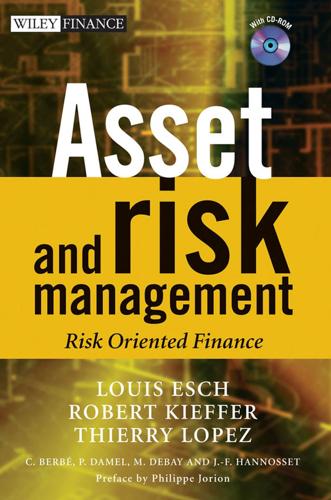
Asset and Risk Management: Risk Oriented Finance
by
Louis Esch
,
Robert Kieffer
and
Thierry Lopez
Published 28 Nov 2005
If we then wish to move to continuous modelling while retaining the same variability per ( X)2 unit of time, that is, with: = 1, for example, we obtain the stochastic process t (n) wt = limn→∞ Zt . This is a standard Brownian motion (also known as a Wiener process). It is clear that this stochastic process wt , defined on R+ , is such that w0 = 0, that wt has independent and stationary increments, and that in view of the √ central limit theorem wt is distributed according to a normal law with parameters (0; t). It can be shown that the paths of a Wiener process are continuous everywhere, but cannot generally be differentiated. In fact wt ε = t where, ε is a standard normal r.v. √ t t ε =√ t 356 Asset and Risk Management 2.3.2.3 Itô process If a more developed model is required, wt can be multiplied by a constant in order to produce variability per time unit ( X)2 / t different from 1 or to add a constant to it in order to obtain a non-zero mean: Xt = X0 + b · wt This type of model is not greatly effective because of the great variability √ of the development in the short term, the standard deviation of Xt being equal7 to b t.
…
. • For MC and for this method only, it is possible to generate not only a future price value but a path of prices for the calculation horizon. We now explain this last case a little further, where, for example, the price evolution of an equity is represented by geometric Brownian motion (see Section 3.4.2): St+dt − St = St · (ER · dt + σR · dwt ) where the Wiener process (dwt ) obeys a law with a zero expectation and a variance equal to dt. If one considers a normal random variable ε with zero expectation and variance of 1, we can write: √ St+dt − St = St · (ER · dt + σR · ε dt) Simulation of a sequence of independent values for ε using the Monte Carlo method allows the variations St+dt − St to be obtained, and therefore, on the basis of the last price observed S0 , allows the path of the equity’s future price to be generated for a number of dates equal to the number of ε values simulated.51 7.5.1.2 Models used (1) The valuation models play an important part in the VC and MC methods.
…
INTERNET SITES http://www.aptltd.com http://www.bis.org/index.htm http://www.cga-canada.org/fr/magazine/nov-dec02/Cyberguide f.htm http://www.fasb.org http://www.iasc.org.uk/cmt/0001.asp http://www.ifac.org http://www.prim.lu Index absolute global risk 285 absolute risk aversion coefficient 88 accounting standards 9–10 accrued interest 118–19 actuarial output rate on issue 116–17 actuarial return rate at given moment 117 adjustment tests 361 Aitken extrapolation 376 Akaike’s information criterion (AIC) 319 allocation independent allocation 288 joint allocation 289 of performance level 289–90 of systematic risk 288–9 American option 149 American pull 158–9 arbitrage 31 arbitrage models 138–9 with state variable 139–42 arbitrage pricing theory (APT) 97–8, 99 absolute global risk 285 analysis of style 291–2 beta 290, 291 factor-sensitivity profile 285 model 256, 285–94 relative global risk/tracking error 285–7 ARCH 320 ARCH-GARCH models 373 arithmetical mean 36–7 ARMA models 318–20 asset allocation 104, 274 asset liability management replicating portfolios 311–21 repricing schedules 301–11 simulations 300–1 structural risk analysis in 295–9 VaR in 301 autocorrelation test 46 autoregressive integrated moving average 320 autoregressive moving average (ARMA) 318 average deviation 41 bank offered rate (BOR) 305 basis point 127 Basle Committee for Banking Controls 4 Basle Committee on Banking Supervision 3–9 Basle II 5–9 Bayesian information criterion (BIC) 319 bear money spread 177 benchmark abacus 287–8 Bernouilli scheme 350 Best Linear Unbiased Estimators (BLUE) 363 beta APT 290, 291 portfolio 92 bijection 335 binomial distribution 350–1 binomial formula (Newton’s) 111, 351 binomial law of probability 165 binomial trees 110, 174 binomial trellis for underlying equity 162 bisection method 380 Black and Scholes model 33, 155, 174, 226, 228, 239 for call option 169 dividends and 173 for options on equities 168–73 sensitivity parameters 172–3 BLUE (Best Linear Unbiased Estimators) 363 bond portfolio management strategies 135–8 active strategy 137–8 duration and convexity of portfolio 135–6 immunizing a portfolio 136–7 positive strategy: immunisation 135–7 bonds average instant return on 140 390 Index bonds (continued ) definition 115–16 financial risk and 120–9 price 115 price approximation 126 return on 116–19 sources of risk 119–21 valuing 119 bootstrap method 233 Brennan and Schwarz model 139 building approach 316 bull money spread 177 business continuity plan (BCP) 14 insurance and 15–16 operational risk and 16 origin, definition and objective 14 butterfly money spread 177 calendar spread 177 call-associated bonds 120 call option 149, 151, 152 intrinsic value 153 premium breakdown 154 call–put parity relation 166 for European options 157–8 canonical analysis 369 canonical correlation analysis 307–9, 369–70 capital asset pricing model (CAPM or MEDAF) 93–8 equation 95–7, 100, 107, 181 cash 18 catastrophe scenarios 20, 32, 184, 227 Cauchy’s law 367 central limit theorem (CLT) 41, 183, 223, 348–9 Charisma 224 Chase Manhattan 224, 228 Choleski decomposition method 239 Choleski factorisation 220, 222, 336–7 chooser option 176 chord method 377–8 classic chord method 378 clean price 118 collateral management 18–19 compliance 24 compliance tests 361 compound Poisson process 355 conditional normality 203 confidence coefficient 360 confidence interval 360–1 continuous models 30, 108–9, 111–13, 131–2, 134 continuous random variables 341–2 contract-by-contract 314–16 convergence 375–6 convertible bonds 116 convexity 33, 149, 181 of a bond 127–9 corner portfolio 64 correlation 41–2, 346–7 counterparty 23 coupon (nominal) rate 116 coupons 115 covariance 41–2, 346–7 cover law of probability 164 Cox, Ingersoll and Ross model 139, 145–7, 174 Cox, Ross and Rubinstein binomial model 162–8 dividends and 168 one period 163–4 T periods 165–6 two periods 164–5 credit risk 12, 259 critical line algorithm 68–9 debentures 18 decision channels 104, 105 default risk 120 deficit constraint 90 degenerate random variable 341 delta 156, 181, 183 delta hedging 157, 172 derivatives 325–7 calculations 325–6 definition 325 extrema 326–7 geometric interpretations 325 determinist models 108–9 generalisation 109 stochastic model and 134–5 deterministic structure of interest rates 129–35 development models 30 diagonal model 70 direct costs 26 dirty price 118 discrete models 30, 108, 109–11. 130, 132–4 discrete random variables 340–1 dispersion index 26 distortion models 138 dividend discount model 104, 107–8 duration 33, 122–7, 149 and characteristics of a bond 124 definition 121 extension of concept of 148 interpretations 121–3 of equity funds 299 of specific bonds 123–4 Index dynamic interest-rate structure 132–4 dynamic models 30 dynamic spread 303–4 efficiency, concept of 45 efficient frontier 27, 54, 59, 60 for model with risk-free security 78–9 for reformulated problem 62 for restricted Markowitz model 68 for Sharpe’s simple index model 73 unrestricted and restricted 68 efficient portfolio 53, 54 EGARCH models 320, 373 elasticity, concept of 123 Elton, Gruber and Padberg method 79–85, 265, 269–74 adapting to VaR 270–1 cf VaR 271–4 maximising risk premium 269–70 equities definition 35 market efficiency 44–8 market return 39–40 portfolio risk 42–3 return on 35–8 return on a portfolio 38–9 security risk within a portfolio 43–4 equity capital adequacy ratio 4 equity dynamic models 108–13 equity portfolio diversification 51–93 model with risk-free security 75–9 portfolio size and 55–6 principles 515 equity portfolio management strategies 103–8 equity portfolio theory 183 equity valuation models 48–51 equivalence, principle of 117 ergodic estimator 40, 42 estimated variance–covariance matrix method (VC) 201, 202–16, 275, 276, 278 breakdown of financial assets 203–5 calculating VaR 209–16 hypotheses and limitations 235–7 installation and use 239–41 mapping cashflows with standard maturity dates 205–9 valuation models 237–9 estimator for mean of the population 360 European call 158–9 European option 149 event-based risks 32, 184 ex ante rate 117 ex ante tracking error 285, 287 ex post return rate 121 exchange options 174–5 exchange positions 204 391 exchange risk 12 exercise price of option 149 expected return 40 expected return risk 41, 43 expected value 26 exponential smoothing 318 extrema 326–7, 329–31 extreme value theory 230–4, 365–7 asymptotic results 365–7 attraction domains 366–7 calculation of VaR 233–4 exact result 365 extreme value theorem 230–1 generalisation 367 parameter estimation by regression 231–2 parameter estimation using the semi-parametric method 233, 234 factor-8 mimicking portfolio 290 factor-mimicking portfolios 290 factorial analysis 98 fair value 10 fat tail distribution 231 festoon effect 118, 119 final prediction error (FPE) 319 Financial Accounting Standards Board (FASB) 9 financial asset evaluation line 107 first derivative 325 Fisher’s skewness coefficient 345–6 fixed-income securities 204 fixed-rate bonds 115 fixed rates 301 floating-rate contracts 301 floating-rate integration method 311 FRAs 276 Fréchet’s law 366, 367 frequency 253 fundamental analysis 45 gamma 156, 173, 181, 183 gap 296–7, 298 GARCH models 203, 320 Garman–Kohlhagen formula 175 Gauss-Seidel method, nonlinear 381 generalised error distribution 353 generalised Pareto distribution 231 geometric Brownian motion 112, 174, 218, 237, 356 geometric mean 36 geometric series 123, 210, 328–9 global portfolio optimisation via VaR 274–83 generalisation of asset model 275–7 construction of optimal global portfolio 277–8 method 278–83 392 Index good practices 6 Gordon – Shapiro formula 48–50, 107, 149 government bonds 18 Greeks 155–7, 172, 181 gross performance level and risk withdrawal 290–1 Gumbel’s law 366, 367 models for bonds 149 static structure of 130–2 internal audit vs. risk management 22–3 internal notation (IN) 4 intrinsic value of option 153 Itô formula (Ito lemma) 140, 169, 357 Itô process 112, 356 Heath, Jarrow and Morton model 138, 302 hedging formula 172 Hessian matrix 330 high leverage effect 257 Hill’s estimator 233 historical simulation 201, 224–34, 265 basic methodology 224–30 calculations 239 data 238–9 extreme value theory 230–4 hypotheses and limitations 235–7 installation and use 239–41 isolated asset case 224–5 portfolio case 225–6 risk factor case 224 synthesis 226–30 valuation models 237–8 historical volatility 155 histories 199 Ho and Lee model 138 homogeneity tests 361 Hull and White model 302, 303 hypothesis test 361–2 Jensen index 102–3 Johnson distributions 215 joint allocation 289 joint distribution function 342 IAS standards 10 IASB (International Accounting Standards Board) 9 IFAC (International Federation of Accountants) 9 immunisation of bonds 124–5 implied volatility 155 in the money 153, 154 independence tests 361 independent allocation 288 independent random variables 342–3 index funds 103 indifference curves 89 indifference, relation of 86 indirect costs 26 inequalities on calls and puts 159–60 inferential statistics 359–62 estimation 360–1 sampling 359–60 sampling distribution 359–60 instant term interest rate 131 integrated risk management 22, 24–5 interest rate curves 129 kappa see vega kurtosis coefficient 182, 189, 345–6 Lagrangian function 56, 57, 61, 63, 267, 331 for risk-free security model 76 for Sharpe’s simple index model 71 Lagrangian multipliers 57, 331 law of large numbers 223, 224, 344 law of probability 339 least square method 363 legal risk 11, 21, 23–4 Lego approach 316 leptokurtic distribution 41, 182, 183, 189, 218, 345 linear equation system 335–6 linear model 32, 33, 184 linearity condition 202, 203 Lipschitz’s condition 375–6 liquidity bed 316 liquidity crisis 17 liquidity preference 316 liquidity risk 12, 16, 18, 296–7 logarithmic return 37 logistic regression 309–10, 371 log-normal distribution 349–50 log-normal law with parameter 349 long (short) straddle 176 loss distribution approach 13 lottery bonds 116 MacLaurin development 275, 276 mapping cashflows 205–9 according to RiskMetricsT M 206–7 alternative 207–8 elementary 205–6 marginal utility 87 market efficiency 44–8 market model 91–3 market price of the risk 141 market risk 12 market straight line 94 Index market timing 104–7 Markowitz’s portfolio theory 30, 41, 43, 56–69, 93, 94, 182 first formulation 56–60 reformulating the problem 60–9 mathematic valuation models 199 matrix algebra 239 calculus 332–7 diagonal 333 n-order 332 operations 333–4 symmetrical 332–3, 334–5 maturity price of bond 115 maximum outflow 17–18 mean 343–4 mean variance 27, 265 for equities 149 measurement theory 344 media risk 12 Merton model 139, 141–2 minimum equity capital requirements 4 modern portfolio theory (MPT) 265 modified duration 121 money spread 177 monoperiodic models 30 Monte Carlo simulation 201, 216–23, 265, 303 calculations 239 data 238–9 estimation method 218–23 hypotheses and limitations 235–7 installation and use 239–41 probability theory and 216–18 synthesis 221–3 valuation models 237–8 multi-index models 221, 266 multi-normal distribution 349 multivariate random variables 342–3 mutual support 147–9 Nelson and Schaefer model 139 net present value (NPV) 298–9, 302–3 neutral risk 164, 174 New Agreement 4, 5 Newson–Raphson nonlinear iterative method 309, 379–80, 381 Newton’s binomial formula 111, 351 nominal rate of a bond 115, 116 nominal value of a bond 115 non-correlation 347 nonlinear equation systems 380–1 first-order methods 377–9 iterative methods 375–7 n-dimensional iteration 381 principal methods 381 393 solving 375–81 nonlinear Gauss-Seidel method 381 nonlinear models independent of time 33 nonlinear regression 234 non-quantifiable risks 12–13 normal distribution 41, 183, 188–90, 237, 254, 347–8 normal law 188 normal probability law 183 normality 202, 203, 252–4 observed distribution 254 operational risk 12–14 business continuity plan (BCP) and 16 definition 6 management 12–13 philosophy of 5–9 triptych 14 options complex 175–7 definition 149 on bonds 174 sensitivity parameters 155–7 simple 175 strategies on 175–7 uses 150–2 value of 153–60 order of convergence 376 Ornstein – Uhlenbeck process 142–5, 356 OTC derivatives market 18 out of the money 153, 154 outliers 241 Pareto distribution 189, 367 Parsen CAT 319 partial derivatives 329–31 payment and settlement systems 18 Pearson distribution system 183 perfect market 31, 44 performance evaluation 99–108 perpetual bond 123–4 Picard’s iteration 268, 271, 274, 280, 375, 376, 381 pip 247 pockets of inefficiency 47 Poisson distribution 350 Poisson process 354–5 Poisson’s law 351 portfolio beta 92 portfolio risk management investment strategy 258 method 257–64 risk framework 258–64 power of the test 362 precautionary surveillance 3, 4–5 preference, relation of 86 394 Index premium 149 price at issue 115 price-earning ratio 50–1 price of a bond 127 price variation risk 12 probability theory 216–18 process risk 24 product risk 23 pseudo-random numbers 217 put option 149, 152 quadratic form 334–7 qualitative approach 13 quantifiable risks 12, 13 quantile 188, 339–40 quantitative approach 13 Ramaswamy and Sundaresan model 139 random aspect of financial assets 30 random numbers 217 random variables 339–47 random walk 45, 111, 203, 355 statistical tests for 46 range forwards 177 rate fluctuation risk 120 rate mismatches 297–8 rate risk 12, 303–11 redemption price of bond 115 regression line 363 regressions 318, 362–4 multiple 363–4 nonlinear 364 simple 362–3 regular falsi method 378–9 relative fund risk 287–8 relative global risk 285–7 relative risks 43 replicating portfolios 302, 303, 311–21 with optimal value method 316–21 repos market 18 repricing schedules 301–11 residual risk 285 restricted Markowitz model 63–5 rho 157, 173, 183 Richard model 139 risk, attitude towards 87–9 risk aversion 87, 88 risk factors 31, 184 risk-free security 75–9 risk, generalising concept 184 risk indicators 8 risk management cost of 25–6 environment 7 function, purpose of 11 methodology 19–21 vs back office 22 risk mapping 8 risk measurement 8, 41 risk-neutral probability 162, 164 risk neutrality 87 risk of one equity 41 risk of realisation 120 risk of reinvestment 120 risk of reputation 21 risk per share 181–4 risk premium 88 risk return 26–7 risk transfer 14 risk typology 12–19 Risk$TM 224, 228 RiskMetricsTM 202, 203, 206–7, 235, 236, 238, 239–40 scenarios and stress testing 20 Schaefer and Schwartz model 139 Schwarz criterion 319 scope of competence 21 scorecards method 7, 13 security 63–5 security market line 107 self-assessment 7 semi-form of efficiency hypothesis 46 semi-parametric method 233 semi-variance 41 sensitivity coefficient 121 separation theorem 94–5, 106 series 328 Sharpe’s multi-index model 74–5 Sharpe’s simple index method 69–75, 100–1, 132, 191, 213, 265–9 adapting critical line algorithm to VaR 267–8 cf VaR 269 for equities 221 problem of minimisation 266–7 VaR in 266–9 short sale 59 short-term interest rate 130 sign test 46 simulation tests for technical analysis methods 46 simulations 300–1 skewed distribution 182 skewness coefficient 182, 345–6 specific risk 91, 285 speculation bubbles 47 spot 247 Index spot price 150 spot rate 129, 130 spreads 176–7 square root process 145 St Petersburg paradox 85 standard Brownian motion 33, 355 standard deviation 41, 344–5 standard maturity dates 205–9 standard normal law 348 static models 30 static spread 303–4 stationarity condition 202, 203, 236 stationary point 327, 330 stationary random model 33 stochastic bond dynamic models 138–48 stochastic differential 356–7 stochastic duration 121, 147–8 random evolution of rates 147 stochastic integral 356–7 stochastic models 109–13 stochastic process 33, 353–7 particular 354–6 path of 354 stock exchange indexes 39 stock picking 104, 275 stop criteria 376–7 stop loss 258–9 straddles 175, 176 strangles 175, 176 strategic risk 21 stress testing 20, 21, 223 strike 149 strike price 150 strong form of efficiency hypothesis 46–7 Student distribution 189, 235, 351–2 Student’s law 367 Supervisors, role of 8 survival period 17–18 systematic inefficiency 47 systematic risk 44, 91, 285 allocation of 288–9 tail parameter 231 taste for risk 87 Taylor development 33, 125, 214, 216, 275–6 Taylor formula 37, 126, 132, 327–8, 331 technical analysis 45 temporal aspect of financial assets 30 term interest rate 129, 130 theorem of expected utility 86 theoretical reasoning 218 theta 156, 173, 183 three-equity portfolio 54 395 time value of option 153, 154 total risk 43 tracking errors 103, 285–7 transaction risk 23–4 transition bonds 116 trend extrapolations 318 Treynor index 102 two-equity portfolio 51–4 unbiased estimator 360 underlying equity 149 uniform distribution 352 uniform random variable 217 utility function 85–7 utility of return 85 utility theory 85–90, 183 valuation models 30, 31–3, 160–75, 184 value at risk (VaR) 13, 20–1 based on density function 186 based on distribution function 185 bond portfolio case 250–2 breaking down 193–5 calculating 209–16 calculations 244–52 component 195 components of 195 definition 195–6 estimation 199–200 for a portfolio 190–7 for a portfolio of linear values 211–13 for a portfolio of nonlinear values 214–16 for an isolated asset 185–90 for equities 213–14 heading investment 196–7 incremental 195–7 individual 194 link to Sharp index 197 marginal 194–5 maximum, for portfolio 263–4 normal distribution 188–90 Treasury portfolio case 244–9 typology 200–2 value of basis point (VBP) 19–20, 21, 127, 245–7, 260–3 variable contracts 301 variable interest rates 300–1 variable rate bonds 115 variance 41, 344–5 variance of expected returns approach 183 variance – covariance matrix 336 Vasicek model 139, 142–4, 174 396 Index vega (kappa) 156, 173 volatility of option 154–5 yield curve 129 yield to maturity (YTM) 250 weak form of the efficiency hypothesis 46 Weibull’s law 366, 367 Wiener process 355 zero-coupon bond 115, 123, 129 zero-coupon rates, analysis of correlations on 305–7 Index compiled by Annette Musker
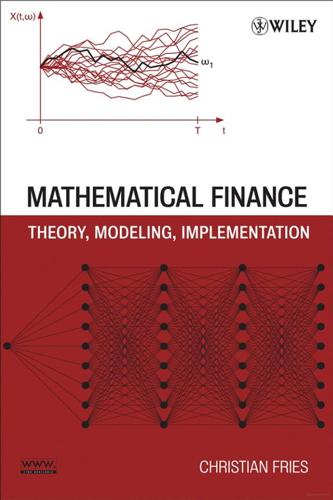
Mathematical Finance: Theory, Modeling, Implementation
by
Christian Fries
Published 9 Sep 2007
. , W(tk ) − W(tk−1 ) are mutually independent. 4. For all 0 ≤ s ≤ t we have that W(t) − W(s) ∼ N(0, (t − s)In ), i.e. normally distributed with mean 0 and covariance matrix (t − s)In , where In denotes the n × n identity matrix. Then W is called (n-dimensional) P-Brownian motion or a (n-dimensional) P-Wiener process. y We have not yet discussed the question whether a process with such properties exists (it does). The question for its existence is non-trivial. For example if we want to replace normally distributed by lognormally distributed in property 4 there would be no such process.8 If we set s = 0 in 4 we see that we have prescribed the distribution of W(t) as well as the distribution of the increments W(t) − W(s).
…
. ©2004, 2005, 2006 Christian Fries Version 1.3.19 [build 20061210]- 13th December 2006 http://www.christian-fries.de/finmath/ INDEX Variable Maturity Inverse Floater . . . 167 Zufallszahlen . . . . . . . . . . . . . . . . . . . . . 389 Vasicek Model . . . . . . . . . . . . . . . . . . . 304 Vasicek model – Extended Vasicek model . . . . . . . . 304 Vega . . . . . . . . . . . . . . . . . . . . . . . . . . . . 107 Vega Hedge . . . . . . . . . . . . . . . . . . . . . . 117 Vererbung . . . . . . . . . . . . . . . . . . . . . . . 378 void (Java™ Schlüsselwort) . . . . . . 365 Volatility – implied volatility . . . . . . . . . . . . . . . . 88 – time structure . . . . . . . . . . . . . . . . . . 309 volatility – forward volatility . . . . . . . . . . . . . . . 131 – implied volatility . . . . . . . . . . . . . . . . 97 volatility bootstrapping . . . . . . . . . . . . 268 volatility surface . . . . . . . . . . . . . . . . . . . 97 – definition . . . . . . . . . . . . . . . . . . . . . . . 97 W weak convergence . . . . . . . . . . . . . . . . . 39 weather derivative . . . . . . . . . . . . . . . . . 61 weighted Monte-Carlo . . . . . . . . . . . . 185 Wiener measure . . . . . . . . . . . . . . . . . . . 40 Wiener process . . . . . . . . . . . . . . . . . . . . 38 Y Yield . . . . . . . . . . . . . . . . . . . . . . . . . . . . 130 Z Zerlegung . . . . . . . . . . . . . . . . . . . . . . . . – Feinheit . . . . . . . . . . . . . . . . . . . . . . . Zero Coupon Bond – Cashflow Diagram . . . . . . . . . . . . . . Zero Structure . . . . . . . . . . . . . . . . . . . . zero structure – definition . . . . . . . . . . . . . . . . . . . . . .
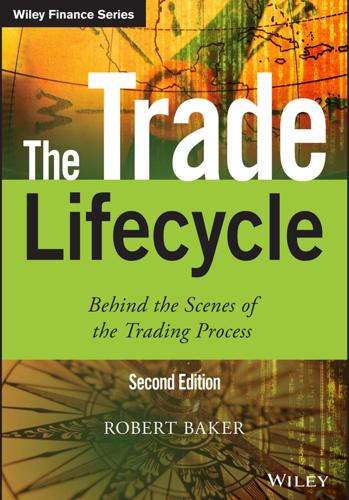
The Trade Lifecycle: Behind the Scenes of the Trading Process (The Wiley Finance Series)
by
Robert P. Baker
Published 4 Oct 2015
Models may arise in many ways; here we illustrate a common progression which is loosely based on the case history of a real model. 1. Someone observing stock prices thought they behaved according to a special pattern in which the logarithm of the random jump in prices followed a process known as Brownian motion (or a Wiener process). (Brownian motion is the mathematical model for the apparently random movement of particles suspended in a fluid.) 2. A crude formula was developed to encapsulate this distribution. 3. The formula was tested and refined using empirical prices and found to be a good approximation to reality. 4.
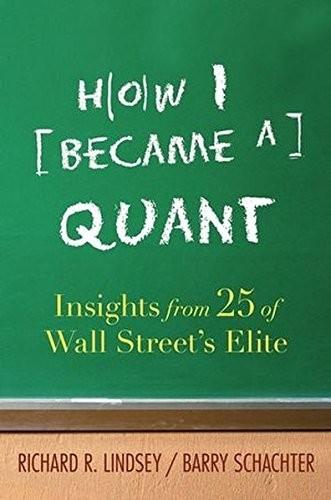
How I Became a Quant: Insights From 25 of Wall Street's Elite
by
Richard R. Lindsey
and
Barry Schachter
Published 30 Jun 2007
I had meanwhile learned from some presentation slides by Mark Broadie and JWPR007-Lindsey May 18, 2007 21:24 Peter Jäckel 171 Paul Glasserman that it is always a good idea to order dimensions by importance when using low discrepancy numbers, and duly pay attention to this fact. Also I had learned from them that the Brownian bridge, for discretized Wiener process path construction, helps to tickle (nearly) the maximum benefit out of low-discrepancy numbers, while not having to use a full matrix multiplication for each path (as one would with the theoretically superior spectral construction method), which could dominate the computational effort. Alright then, I say to myself, there are a couple of minor caveats to heed when using Sobol’ numbers, but that’s fair enough, given that they are the equivalent to nitromethane-fuelled engines in Indy car races: you just ought to be a bit more careful than with ordinary engines!
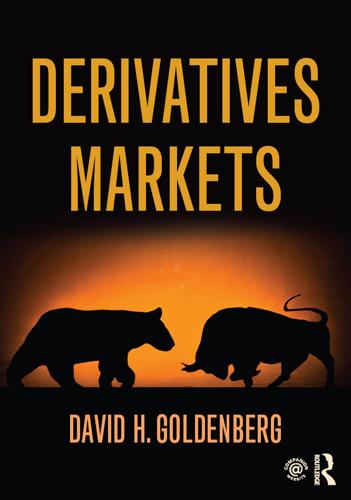
Derivatives Markets
by
David Goldenberg
Published 2 Mar 2016
We won’t go into all the details as to exactly what (Ω,ℑW,℘W) represents but you can think of the probability measure, ℘W, which is called Wiener measure, to be defined in terms of the transition density function p(T,y;t,x) for τ =T–t, Norbert Wiener gave the first rigorous mathematical construction (existence proof) for ABM and, because of this, it is sometimes called the Wiener process. It has the following properties, 1. W0=0 (starts at 0). 2. For every set of times t0=0<t1<t2<…tn–1<tn the increments (changes) Wt1–Wt0,Wt2–Wt1,…,Wtn–Wtn-1 are independent (independent increments). 3. For any times s and t with 0≤s<t, the random variable Wt(ω)–Ws(ω) is normally distributed with mean E(Wt(ω)–Ws(ω))=0 and variance Var(Wt(ω)–Ws(ω))=t–s (normally distributed increments). 4.
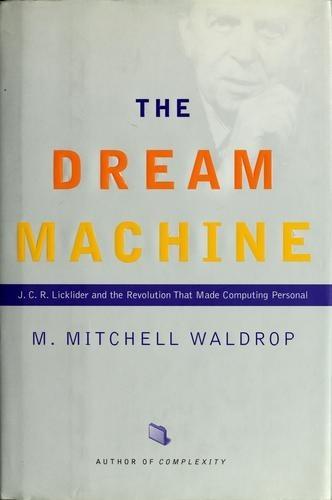
The Dream Machine: J.C.R. Licklider and the Revolution That Made Computing Personal
by
M. Mitchell Waldrop
Published 14 Apr 2001
MIT's transformation still lay in the fu- ture, and the mathematics department existed mainly to teach math to the engi- neering students. The school wasn't oriented toward research at all. However, no one seems to have informed Wiener of that fact, and his mathematical output soon became legendary. The Wiener measure, the Wiener process, the Wiener- Hopf equations, the Paly-Wiener theorems, the Wiener extrapolation of linear times series, generalized harmonic analysis-he saw mathematics everywhere he looked. He also made significant contributions to quantum theory as it devel- oped in the 1920s and 1930s. Moreover, he did all this in a style that left his more conventional colleagues shaking their heads.